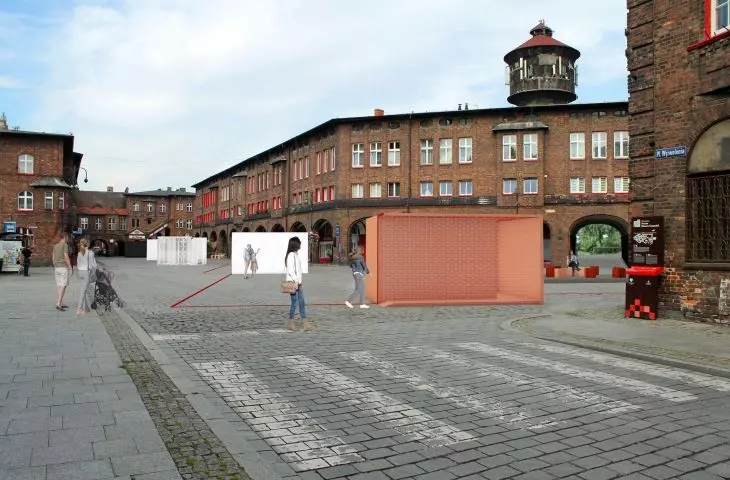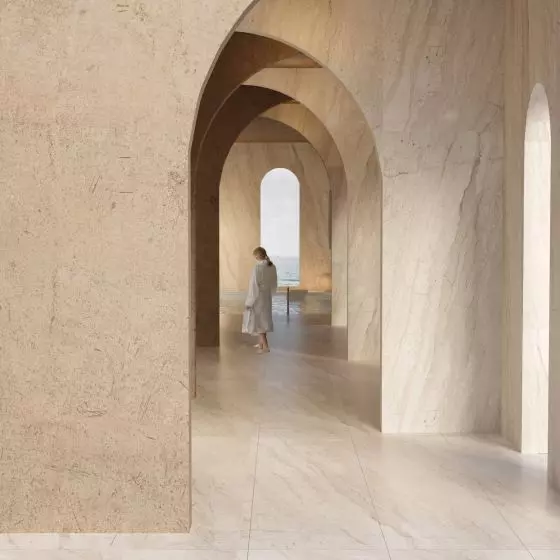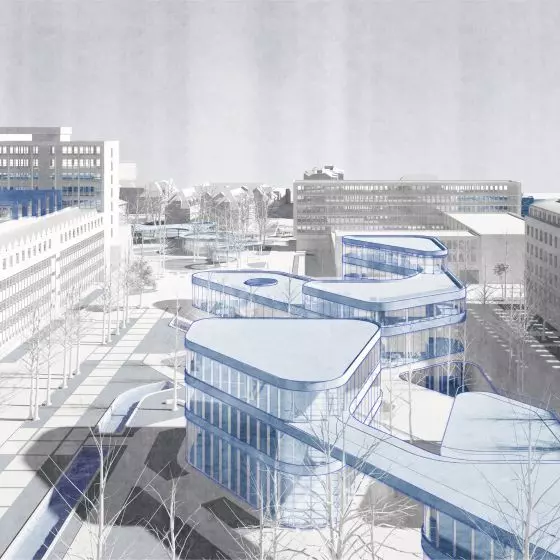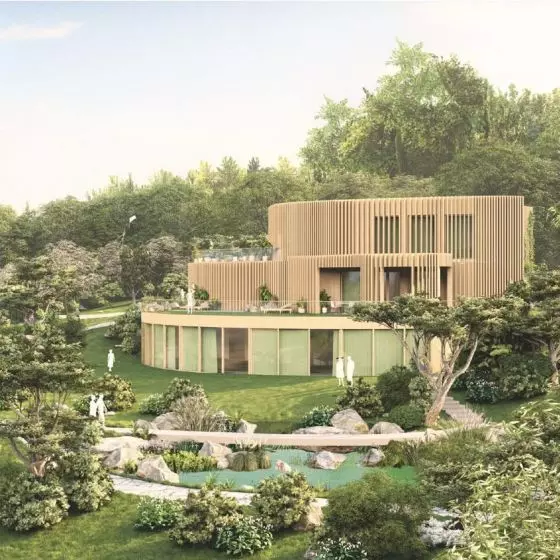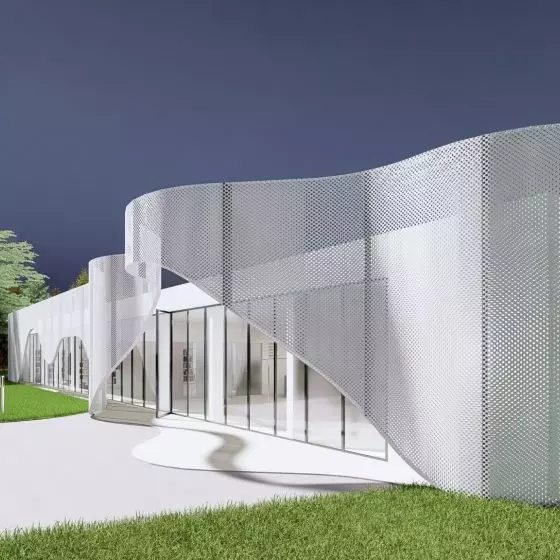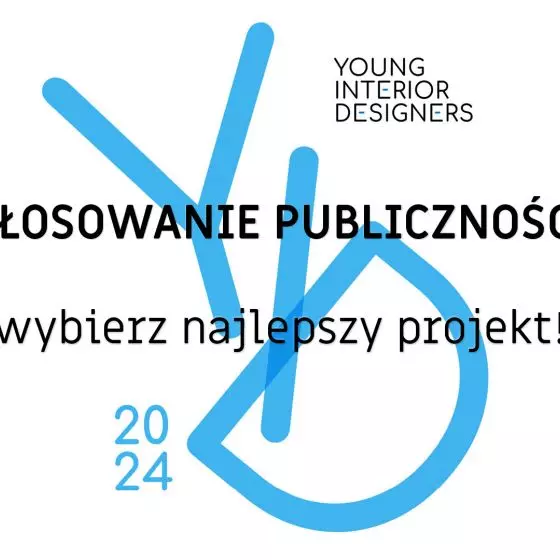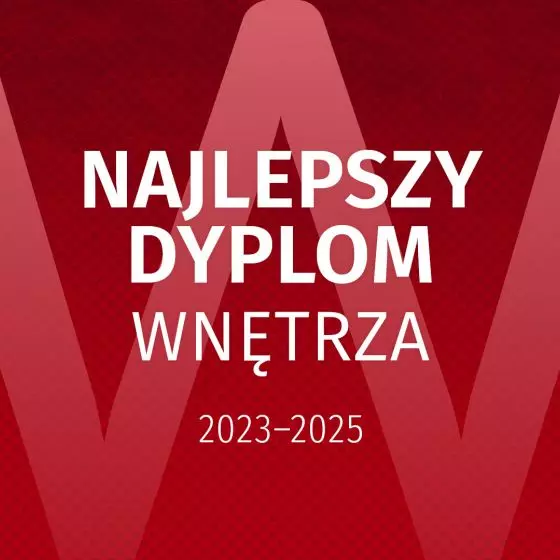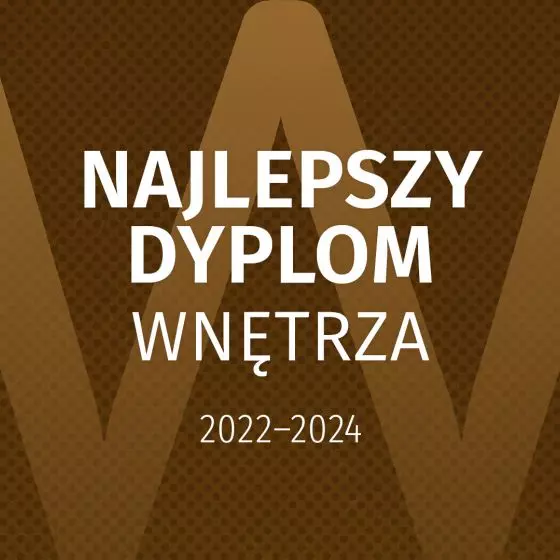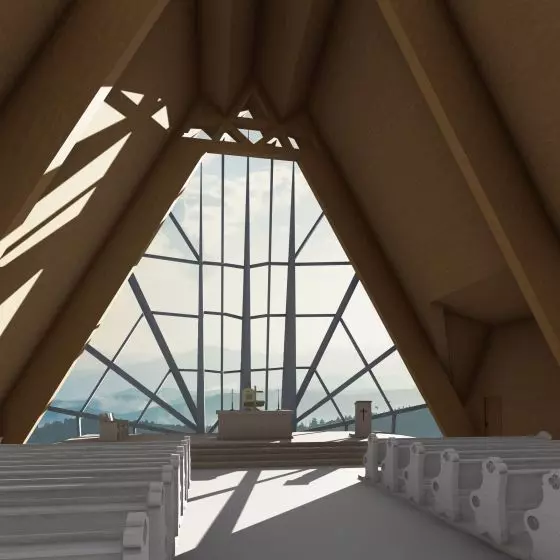Work submitted for the competition
"Best Interior Diploma 2020/2022".
The idea to create an exhibition depicting the history of music was born from the desire to show the matter presented often in the context of the era, composer or instruments. The viewer's attention can then be drawn away from the emotional aspect of music. The present project refers to its ephemeral dimension, giving viewers the space to feel it.
project for an educational and promotional exhibition in Nikiszowiec
© Ewelina Mamet
The narrowing of the topic to Silesian culture was influenced by the choice of Nikiszowiec, a historic housing estate in Katowice, for the location of the exhibition, as well as by the stereotypical view of Silesia, which is not at first associated with music. Six areas of the Silesian musical tradition - brass bands, choirs, folk songs, wedding music, organ music and instrumental ensembles - were singled out, and each was assigned a pavilion where recordings of the music in question are played. The aim of the exhibition is to educate and promote Silesian musical culture, and to show its extraordinary diversity.
The author has distinguished six areas of Silesian musical tradition
© Ewelina Mamet
In the pavilion dedicated to brass bands, the shimmering gold color of the interior is reminiscent of the material of brass instruments, while the contrasting black on the exterior walls alludes to a miner's uniform. The space is filled with red plumes derived from a miner's chako. The entrance to the building is a scaled-down section of a trumpet, whose pistons of varying heights evoke the instrument being played.
brass band pavilion
© Ewelina Mamet
In another of the objects, the accent falls on the role of the human voice. Sections of the interior surfaces are covered with the names of choirs expressed graphically. As the music plays, it will become clear that the pavilion presents the history of their activities in Silesia. Another way of presentation is a stepped form resembling rows of people with specific voices. The black and white of the pavilion is inspired by the festive costumes of the choirs - a white shirt and black elegant pants.
folk songs pavilion
© Ewelina Mamet
Folksongs were presented in the context of the custom of plucking feathers. The setting is the kitchen, with a table at its center, a symbol of a place to meet and bond. The feathers floating inside juxtaposed with the music being played are meant to help one get into the mood of Silesian custom. Transparent walls make it possible to look inside, to get a feel for the atmosphere inside the facility. The entire structure is surrounded by a scaled-down motif of window bars alluding to other patterns present in the estate's landscape.
projection and cross-section of the wedding music pavilion
© Ewelina Mamet
The interior of the building dedicated to wedding music is filled with a structure covered with myrtle branches as a reference to garlands, an important element of Silesian wedding tradition. It also serves to fix instruments symbolizing the orchestra that plays during weddings. The surfaces of the walls, covered with a tulle-like material, create a transparent structure through which the green of the myrtle is supposed to subtly permeate.
The interior of the pavilion with organ music
© Ewelina Mamet
The form of the object for organ music does not reveal to which shot of Silesian music it was dedicated. A section of the wall leading to the center of the object is formed by an openwork structure alluding to the arrangements of bricks that characterize the housing development, while the inner walls are covered with elements resembling pipes. The expressive interior is meant to intensify the feelings evoked by the music filling the entire space of the object.
design of instrumental ensembles pavilion
© Ewelina Mamet
The pavilion dedicated to Silesian instrumental ensembles - mandolin and accordion - is meant to resemble the former instrument. Elements reminiscent of its strings partially wrap around and permeate the block. Texture on the two outer walls suggests the instrument's contours. The interior is completely darkened, which serves to evoke the impression of being inside the sound box. The only illuminated elements of the interior are the accordions suspended from the ceiling and the segments that serve as mandolin strings.
interior of the choir pavilion
© Ewelina Mamet
The layout of the pavilions allows for freedom of touring, as it does not correspond to the chronology of the development of Silesian music. However, the relations between neighboring buildings have not been overlooked; they are emphasized by a red line inspired by the red doorframes, characteristic of Nikiszowiec buildings. It accentuates the entrances to the pavilions and extends to the street entrances to pique interest and indicate the exhibition zone.
Ewelina MAMET
Illustrations: © Author






